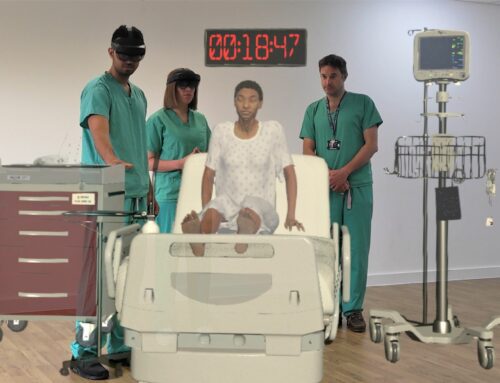By Heather Pfeffer, Complex Claims Manager at Beazley |
 In March 2020 – at the outset of COVID-19 in the U.S. – the Office of Civil Rights (OCR) issued an Administrative Waiver for Telehealth as part of an overall effort to ease Health Insurance Portability and Accountability Act (HIPAA) restrictions during the pandemic.1
In March 2020 – at the outset of COVID-19 in the U.S. – the Office of Civil Rights (OCR) issued an Administrative Waiver for Telehealth as part of an overall effort to ease Health Insurance Portability and Accountability Act (HIPAA) restrictions during the pandemic.1
Relaxing the HIPAA restrictions around telehealth dramatically increased access to remote care for patients during the national public health emergency created by the pandemic. People who were quarantining and could not physically go to a doctor’s office – or did not want to risk leaving home – could connect with a healthcare professional via teleconference. Importantly, virtual appointments could be legally scheduled and conducted across state lines and, in some cases, reach rural and underserved patient populations. For example, a patient receiving care in New York City who temporarily moved to a less populated area in Vermont during the pandemic could still receive remote care from their healthcare provider virtually.
Then, in January 2021, as vaccines became available, the OCR eased the HIPAA rules around booking an appointment online.2 While using a web-based app to book a vaccine appointment in the past would potentially have been a HIPAA violation, the waivers enabled online scheduling by vaccine seekers and healthcare professionals alike. This created a more efficient system to help distribute the COVID-19 vaccine to the U.S. population and help stem the spread of the virus.
Over the last 18 months, some states have changed their laws in response to the OCR waivers, while other states have made little or no changes in what defines telehealth and how it is provided.
In partnership with national law firm Baker-Hostetler, we conducted an in-depth review of the telehealth regulations in all 50 states to create a guide for providers, patients, and insurers to help navigate this complex regulatory environment. The following are examples of differences in state laws that telehealth providers should be aware of.
Who Can Provide Telehealth
In many, if not most cases, a physician needs to be licensed in the state where the patient resides. However, during COVID-19, some exceptions have been made. Virginia, for example, allows doctors licensed in other states and the District of Columbia to conduct telehealth appointments with Virginia residents with whom they have an established practitioner-patient relationship.3
Some states such as California recognize that telehealth services can be provided by a wide variety of professionals including physicians, nurses, and dentists, but also chiropractors, speech pathologists, registered dietitians, occupational therapists, and licensed midwives.4
By comparison, as of February 2021, Pennsylvania has no statute or regulation providing parameters for the practice of telehealth telemedicine or prohibiting telemedicine.5
How “Telehealth” is Defined
What qualifies as a telehealth appointment varies from state to state. For example, the Commonwealth of Massachusetts recognizes “audio-only telephone” as a telehealth visit, but its neighboring state Connecticut does not.6
Oregon allows “telepsychiatry” while Texas specifically excludes mental health services. Music lovers take note: at least one state allows the telehealth services of a “music therapist7.”
Accepted “Modalities”
In terms of the technology used, the most common understanding is that telehealth is two-way audio and video communications that enable provider and patient to see and hear one another. To help practitioners navigate the many services available, the OCR has published a list of “non-public facing” methods that can be used: HIPAA Compliant Video Communications9
Most states do not recognize simple email exchanges between provider and patient or the use of facsimile transmission.
It is unclear how long the OCR waivers will remain in place. Some speculate they could be suspended at the end of 2021, while others expect the waivers to be in effect until this national health emergency is officially deemed to be over. What is clear, however, is that telehealth is here to stay and knowing and adhering to the state regulations is “a must” for providers. Our U.S. Telehealth Laws Interactive Map can serve as a helpful resource to reference the various and ever-changing laws.
 About the Author
About the Author
Heather Pfeffer, J.D., is a claims manager at Beazley, responsible for a wide variety of complex claims, including healthcare. She began her career in private practice defending medical malpractice actions for 10 years before transitioning to a risk management position at Northwestern Memorial Hospital.
2 OCR Web-Based Scheduling Notification
3, 4, 5,6,7, U.S. Telehealth Laws Interactive Map (beazley.com)












